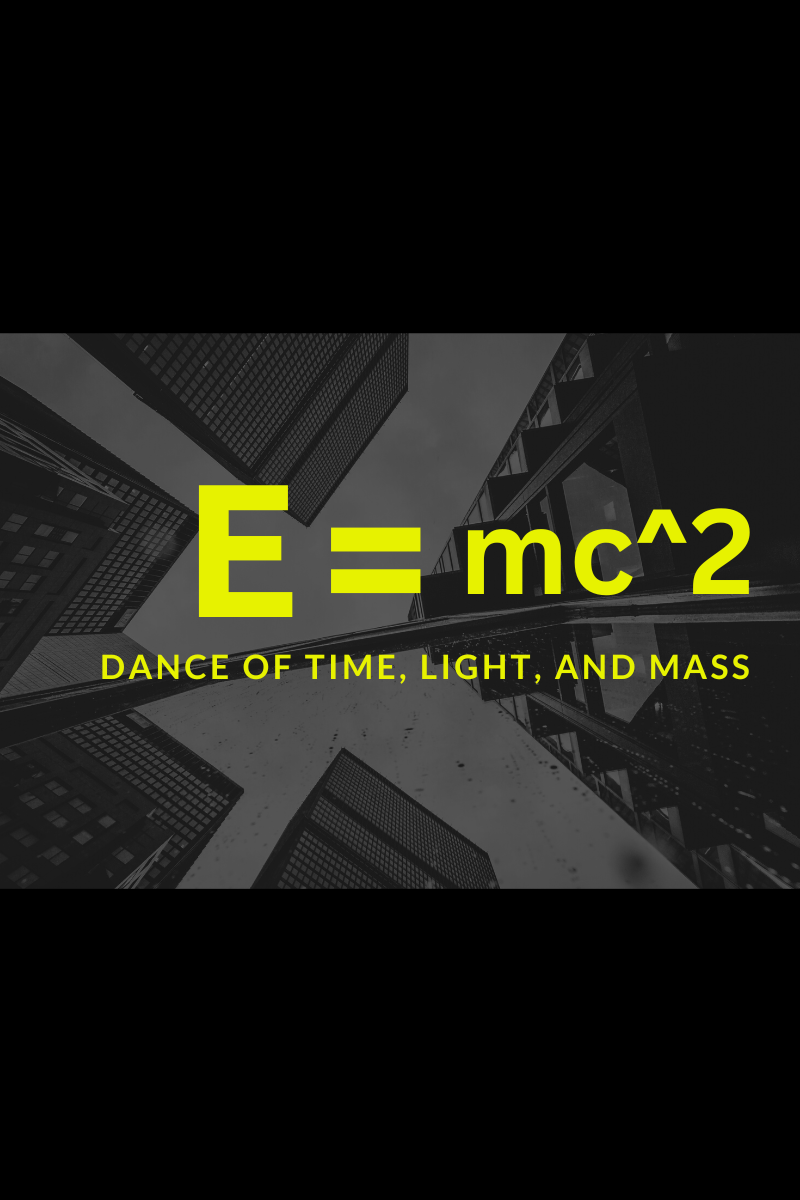In the vast realm of physics, few equations are as iconic as Einstein’s E=mc^2. At its core, this equation binds the concepts of energy, mass, and the speed of light in a profound relationship that has reshaped our understanding of the universe. Let’s embark on a journey to understand the intricate dance between time, the speed of light, and mass, all through the lens of this legendary equation.
1. The Essence of E=mc^2:
-E: Represents energy, a measure of the ability to do work or cause change.
– m: Stands for mass, the amount of matter in an object.
– c: Denotes the speed of light in a vacuum, approximately 3*10^8 meters per second. When squared, this value becomes an incredibly large number, emphasizing the immense energy contained within even a small amount of mass.
2. The Speed of Light as a Cosmic Speed Limit:
The speed of light isn’t just another number; it’s a fundamental constant of nature. According to Einstein’s theory of relativity, nothing can travel faster than light. This isn’t merely about photons zipping through space; it’s a statement about the very fabric of spacetime. As objects with mass accelerate closer to the speed of light, they require more energy, and their effective mass increases, making it impossible to ever reach or surpass this cosmic speed limit.
3. Time Dilation: When Time Slows Down:
One of the most mind-bending consequences of relativity is time dilation. As an object’s speed approaches the speed of light, time for that object appears to slow down relative to a stationary observer. This isn’t a mere illusion; it’s a fundamental aspect of how time and speed intertwine in our universe. Imagine a clock on a spaceship traveling near the speed of light. To an observer on Earth, the clock would appear to tick more slowly than one on our planet.
4. Mass and Energy: Two Sides of the Same Coin:
E=mc^2 tells us that mass and energy are interchangeable. This concept is vividly demonstrated in nuclear reactions, where tiny amounts of mass are converted into vast amounts of energy. The sun, for instance, powers itself by converting hydrogen into helium, releasing energy in the process. This energy, derived from a minuscule loss of mass, is what lights up our skies and warms our planet.
5. Implications for the Modern World:
The relationship between mass, energy, and the speed of light isn’t just theoretical. It has practical implications. Nuclear power plants, for example, harness the energy released from the conversion of mass based on E=mc^2. Similarly, our understanding of the equation has paved the way for advancements in particle physics, leading to innovations like the Large Hadron Collider.
Conclusion:
Einstein’s E=mc^2 is more than just an equation; it’s a story. A story of a universe where time, light, and mass are intricately connected in a cosmic dance. As we continue to explore the depths of our universe, this relationship will undoubtedly guide us, challenging our perceptions and expanding our understanding of the cosmos.
For those keen on delving deeper into this topic, I’d recommend reading “Relativity: The Special and the General Theory” by Albert Einstein himself. It provides a comprehensive yet accessible exploration of these concepts.
References:
– Einstein, A. Relativity: The Special and the General Theory.
– Feynman, R. P. (2011). Six not-so-easy pieces: Einstein’s relativity, symmetry, and space-time.
https://amzn.to/3Kvr7Qw
Pranab Hazarika

